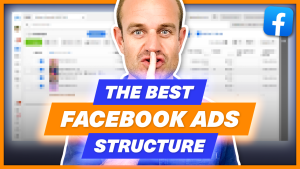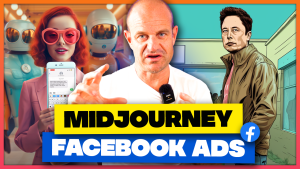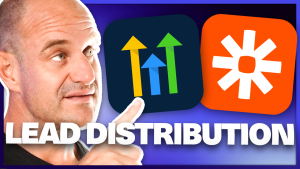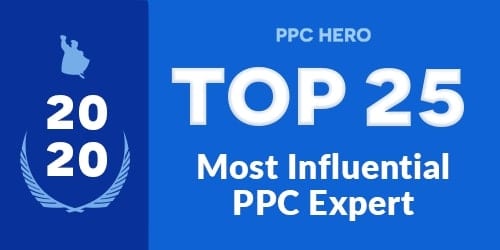Every so often, some small business or PPC agency owners will crawl out of their office, raise their arms to heaven, and say:
“That’s it! It’s official! Facebook is dead, and my budget is buried!”
(Or something along those lines).
Rumours like this have been circulating since 2014 (see Post Planner’s valiant efforts to reassure, here) and yet, in 2019, Facebook advertising is still going strong.
Still, many SMB owners have been convinced enough by these voices to pull the plug on their Business Managers.
And their excuses are always the same:
“We’re not getting the customers we want from Facebook.”
“Facebook doesn’t work for the niche I’m in.”
“I sell a service, not a product, so Facebook doesn’t work.”
Then, in a 2017 study conducted by Weebly, as many as 62% of small business owners said they felt like their Facebook ads were failing.
Two years later, advertising on Facebook has changed dramatically, with more rules and requirements than ever before. As we’re encouraged to change our creative every two weeks, it’s easy to see why so many SMB owners have put Facebook to rest. It takes way too much effort for too little payoff.
Thing is, if you fall victim to the fearmongering, you’ll actually be cutting off one the most essential marketing tools available. Facebook advertising is alive and well, and YOU can become a master of the platform, as long as you look to work smarter rather than harder.
Here are the most common reasons we hear for “Facebook being dead”, and our counterarguments on why that simply isn’t the case.
Contents
Common Excuse #1: Algorithm Changes Makes Facebook Advertising Too Difficult

It’s true that, in January 2018, Mark Zuckerberg proposed massive changes to what users would see on their newsfeeds. Badly burned by the “Fake News” and “Russian Ad” scandals in 2016, Facebook’s reputation took a hammering.
To ensure fake news was wiped from the platform, Zuckerberg announced that the algorithm would, from then on, prioritise “meaningful interactions” from friends and family over content from brands.
This meant a lot of businesses and publishers saw their content get less coverage, as Facebook prepared to serve native posts from users. A loss of coverage meant less traffic which, in turn, meant fewer leads.
But that doesn’t mean that brands, organic content and adverts are out of the picture altogether. The new sophisticated algorithm means that Facebook arranges thousands of potential posts into an order of how likely it is the individual user will interact with the content.
Here’s how it works. Facebook’s algorithm is separated into four basic components:
- Inventory (content available)
- Signals (considerations about content)
- Predictions (considerations about the person)
- Overall score
These four factors all work together to give users a better overall Facebook experience. Let’s break them down.
Inventory
Pretty self-explanatory. Facebook refers to all available content for a user’s feed. This includes posts from friends and family, groups you’ve joined and pages you like.
Signals
Facebook now uses signals to select what it thinks the user would most like to read or watch. Some specific signals affecting Facebook rankings include:
- Comments and likes on a user’s status or photo
- Engagement with publisher content shared by friends
- Shares on Messenger
- Replies to comments on a video
- What time content was posted
- Content type
- Average time spent on content
- How informative the post is
- Completeness of profile
Predictions
Facebook uses your profile information and previous behaviour to decide what to show you. They automatically work out how likely you are to engage or interact with content. If the algorithm thinks the user won’t like it, they won’t bother showing it on a feed.
Score
Once Facebook has made these decisions, they’ll give the content in question a “score”. If it’s deemed “highly relevant”, that will boost the score and the article, ad or video will appear on the person’s feed. Obviously, the content will have different ratings based on the unique user.
OK… So How Does That Affect PPC?
Despite all the new changes, Facebook absolutely can’t afford to lose its advertisers. Mobile advertising accounts for more than 90% of Facebook’s revenue growth and drives 88% of the platform’s total profit. In other words, Facebook is prepared to turn cartwheels to keep their paid advertisers happy.
That said, you can’t just increase your budget and churn out any old content. “Paying to play” guarantees Facebook will show your advertisements, as long as you’ve scaled them successfully to the right kind of audience. However, the amount of times your ad gets shown depends entirely on the quality of your content and how much your audience interacts with it.
So, if you’ve been ignoring Facebook’s Relevance Score metric, you’re going to have a much harder time getting your advertising money’s worth from the platform.
The social media platform uses Feedback from audiences to determine a score from 1-10. 10 is “highly relevant” and the best score you can get.
The Facebook Ad Relevance Score
As this feature came out in 2015, I’m not going to spend (too) long telling you what you already know.
Facebook gives your ad a relevance score after 500 impressions, but you may see your score rise after another 200-500.
Positive feedback means Likes, positive reactions and shares. Facebook loves it if someone responds with a video or gif. If your relevance score is above a 5 (and, ideally, you should aim for a 7 or more), Facebook will reward you with a discount for each click.
Scores can fluctuate daily, and this is Facebook’s way of keeping the user’s feed current. If your ad has a score of 8 or 9 one day, then a 4 or 5 a week later, it’s time to consider freshening up your creative.
Improving your relevance score means knowing your audience and making great ads. The success of paid ads depends on what speaks most to the audience, so don’t think Facebook secretly hates you. Using Facebook Ads Manager, you can see how well your ads are performing and what you need to change.
FlexxDigital has started using Facebook’s “Dynamic Creative” feature, released late in 2017.
The Dynamic Creative feature automatically tests multiple versions of an ad within a targeting group. This is great news for SMBs and smaller PPC agencies, as they tend to hold off on AB tests due to the cost.
Marketers can use the following variations for testing:
- Text options x 5
- Images x 10 or Videos x 10
- Headlines x 5
- Link descriptions x 5
- CTA buttons x 5
Overall, that’s 30 assets with 6,250 combinations. However, Facebook Business recommends you aim for quality rather than quantity – e.g. testing two strong assets you’re sure about rather than trying to fill the full quota with lesser quality content.
Results of the tests come in quickly, taking about 3-5 days. This is perfect for finding a high-performing ad combo before launching a huge campaign. It’ll also speed up your results for reaching your lead generation goals. What more could anyone ask for?
If you’ve found your best ads, and you’re still struggling to generate leads on Facebook, think of introducing a low-risk offer to your campaign.
For example, if you’re selling an expensive service and your CTA button reads “Buy Now”, you’ll already be turning away thousands of potential customers.
A customer needs to trust you before they’re willing to get out their wallet. At the Facebook stage, 75% of your customers are looking for more information.
Once they know your brand, they’re starting to like it. 23% of customers at this point are comparing you to other brands.
Then, once they know you and like you, the potential customer will begin to trust you. 2% of your initial Facebook audience will become paying customers.
As lead generators, your job is to take Facebook users from the know to the like stage. It’s up to your client’s sales team to take the lead from like to trust.
But low-risk offers – i.e. a “gift” in exchange for contact details – can help make the segue from know to like (and then like to trust) much easier. Low-risk offers include:
- e-Books
- Templates
- Whitepapers
- Guides
- Reports
- Resources
Your ad should make the low-risk offer clear to the user, then your landing page should tell the reader why they should download the gift and read/use it. As you’re giving away valuable information for free, your brand will stick in the user’s mind and make them much more likely to become a high-quality lead.
Common Excuse #2: Users Are Leaving Facebook For Other Platforms

Another excuse to throw in the Facebook towel is that people are leaving the social media platform in droves.
Facebook is indeed becoming a bit more of a “mum and dad” platform, with 2.2 million Millenials moving away from Facebook to Instagram and SnapChat. In 2017, 79% of 12-34-year-olds were on Facebook, with that number dropping to 67% in 2018 and plummeting to 62% in 2019.
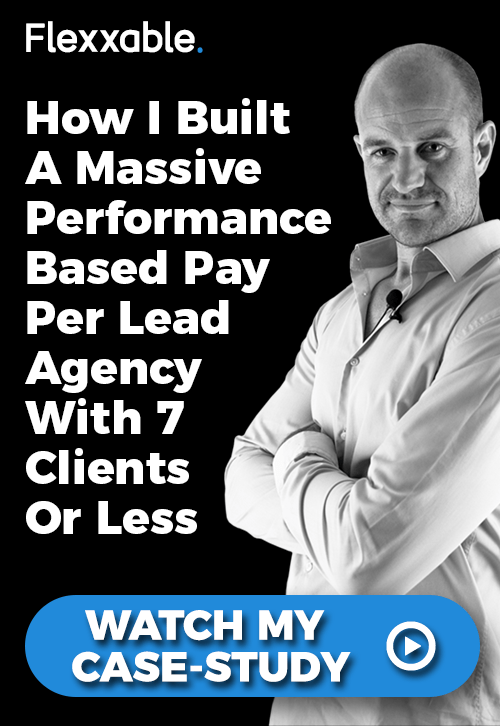 However, out of those 12-34-year-olds, 66% have migrated to Instagram, a Facebook-owned company. Considering the massive amount of changes Facebook has introduced since 2017, we can assume they’ll also make changes to Instagram. There are going to be more and more opportunities with video on Instagram, giving us advertising opportunities in a space which hasn’t even opened up yet.
However, out of those 12-34-year-olds, 66% have migrated to Instagram, a Facebook-owned company. Considering the massive amount of changes Facebook has introduced since 2017, we can assume they’ll also make changes to Instagram. There are going to be more and more opportunities with video on Instagram, giving us advertising opportunities in a space which hasn’t even opened up yet.
Basically – if you ignore Instagram now, you’ll be left far behind when it’s time to jump on the bandwagon.
As for SnapChat, it’s true that user figures have rocketed since 2017 with the total number of active users at 300+ million.
However, compared to Facebook’s 2.38 billion active users, SnapChat still trails far, far behind.
It also must be noted that SnapChat’s largest age demographic falls to 13-24-year-olds at 90%, with 45% aged between 18-24. While we can’t ignore Facebook’s need to adapt for a younger, trendier audience, the prognosis for advertising isn’t that bleak.
According to the Independent, today’s young adults own less property and have fewer savings than twenty-somethings a decade ago. In fact, more than 50% of people in their twenties have no savings at all.
While that’s nothing to celebrate for businesses directly targeting the 18-24 demographic, for lead generators that pick their niches well, it doesn’t mean the end of Facebook advertising.
There’s plenty of niches, or niches-within-niches, out there that don’t directly appeal to the 18-24 demographic. These older demographics have more disposable income, are more likely to be homeowners, and, depending on the age range you’re targeting, up to 78% have an active Facebook account (30-49-year-olds).
If you’re still unconvinced, stats for the “Social Media Brand Used Most Often” still lists Facebook as far and away the most used platform.
In 2019, the figures look like this:
- 52% of internet users age 12+ use Facebook the most
- 16% of users age 12+ visit Instagram the most
- 13% visit SnapChat the most
- 5% use Pinterest
- 5% use Twitter
(Mashable).
User decline or not, Facebook still dominates the social media market.
Common Excuse #3: Facebook Keeps Reducing Its Targeting Options

Facebook constantly lurks in the news for some reason or other. Among the most famous of cases was the Cambridge Analytica data scandal in early 2018. Cambridge Analytica harvested millions of people’s personal data from their Facebook accounts without their consent, then used it for political advertising purposes.
The Guardian’s Harry Davies first reported Cambridge Analytica’s data mining in 2015, to which Facebook offered the rather limp answer “we’re investigating”. Further reports were made by the Swedish publication Das Magazin in 2016, then The Guardian again in 2017, and The Intercept, also in 2017.
Everything came to a head in March 2018, when an ex-Cambridge Analytica employee was persuaded to act as a whistleblower.
This, along with the more recent complaint against Facebook, filed by the U.S. Department of Housing and Urban Development (HUD), has forced the social media platform to remove over 5,000 ad targeting options. HUD argued that Facebook’s ad settings allowed marketers to bar people of certain races, religions, sexualities and national origins.
Facebook admitted that, though these options were usually used for legitimate reasons, minimising the risk of discrimination was more important.
First off, these changes mostly affect the housing, employment and credit sectors. Secondly, as long as you run your ads in a fair and ethical way, targeting still shouldn’t be a problem.
Facebook isn’t out to make your life a misery. Most of its revenue comes from advertisers – i.e. you – so cutting off targeting options used by ethical businesses would be cutting off its virtual nose to spite its virtual face.
People outside of the housing, employment and credit sectors can still target audiences according to:
- Age
- Location
- Languages
- Gender
- Relationship status
- Work
- Education
- Generation
- Interests
And scores more.
If you’re still worried, open up your audience. The best advertising campaigns we run at Flexxable are for broad audiences.
Again, it all comes down to the Facebook algorithm. Facebook uses profile information and previous behaviours to decide what to post on a user’s feed. If they think your ad will generate a share, Like, comment or click from a unique user, they’ll show it. Given a bit of freedom, Facebook will work incredibly hard to find an audience that works for you.
Common Excuse #4: There’s Too Much Competition

This article is starting to feel a bit like a “no win” situation.
“People are leaving Facebook”.
“My audiences aren’t on Facebook”.
“Other businesses say that Facebook advertising doesn’t work”.
“Too many businesses are advertising on Facebook”.
If Facebook advertising were as “dead” as some people claim, there wouldn’t be over 7 million active advertisers on the platform as of February 2019.
The contradictory excuse, then, is that there’s too much competition on Facebook, so why even bother?
With new businesses springing up by the day, almost all markets you can think of are saturated. They’re not just advertising on Facebook, either. Every day, people are bombarded with up to 10,000 ads.
There are ways to make your business/advertising stand out. For example, I said in a previous post that choosing a niche isn’t enough anymore. If you’re trying to do PPC marketing in a competitive industry, you’ll find yourself competing with the big players who’ve been in the game for decades.
If you’re generating leads via paid traffic for your business or for a client, you need to narrow down your niche to one smaller micro niche.
A micro niche, sub-niche, or niche within a niche are all names for a smaller segment of the niche market.
Taking the time to find a micro niche doesn’t mean there’s less money in it for you. Instead, it means there will be plenty of demand, but far less competition.
You’ll also find that finding a micro-niche means you’ll build a much more personalised experience for your visitors. In turn, Facebook will judge the “post-click” journey to be valuable, positively impacting your campaigns.
We’ve found that advertising to a micro niche gets us better quality leads at a lower cost per lead (CPL). To find out more about micro niches, click here.
The other way to stand head and shoulders above the competition is to work on your creative. Out of the 7 million marketers on Facebook, how many do you think are masters in their field?
The competition on Facebook is forcing advertisers to get better. Gone are the days where you can post click-bait type headlines and be done with it.
I talk about the creative in most of my blog posts. You can read my opinion about creative PPC advertising in this post here.
Take measures to understand your audience, write some great hooks and engage with your customer, and you’ll be the cream that rises to the top.
Common Excuse #5: Facebook Is Too Expensive

There are tonnes of reasons why Facebook advertising costs are rising. Some of these are down to you, while others are because of the platform itself.
In reality, however, Facebook is still the cheapest advertising platform by miles if you’re aiming for reach.
On average, newspaper advertising costs $32 to reach 1000 people. Radio comes in at $8, with Facebook sitting pretty at $7.19.
It also depends on what you’re selling. Some businesses will spend thousands upon thousands on Facebook ads but, for every pound or dollar spent, they will make eight times that.
Some PPC marketers try to get the cheapest cost per lead (CPL) possible. This is a common mistake. They’ll use all the data analysis tools they can get their hands on, bid on the cheapest keywords, or spend hours mucking around with their Facebook audiences.
These people find they save a bit of money short-term. It’s only later on when they realise how much their lead-quality has faltered, with lower contact and conversion rates.
If you value high-quality leads (and everybody does), then it’s worth spending more money to ensure you reach your goals. Even if you’re working off the cost per lead model, spending that bit extra can be beneficial. Though you may not get as high ROI, your client will be so pleased with high-quality leads, they’re likely to hire your services again and again.
Crap quality? It’ll be a firm goodbye.
Of course, there are ways to ensure a reasonable cost per lead without compromising on quality. You can read about some of them here.
You can also keep on top of your CPL by refreshing your ad creative every couple of weeks, split testing ads to see which perform best, and killing ads that are underperforming after a four-day testing period.
Conclusion
Facebook is still a powerful marketing tool that you can use to push products and services to achieve your financial goals. Facebook isn’t going to curtail paid advertising any time soon – so use your resources to work out a reliable PPC marketing strategy rather than panicking about what may or may not happen in the future.
It also doesn’t hurt to expand. If you’re worried about Facebook, now is the time to look into Instagram and YouTube marketing. But I wouldn’t jump the Facebook ship just yet.



